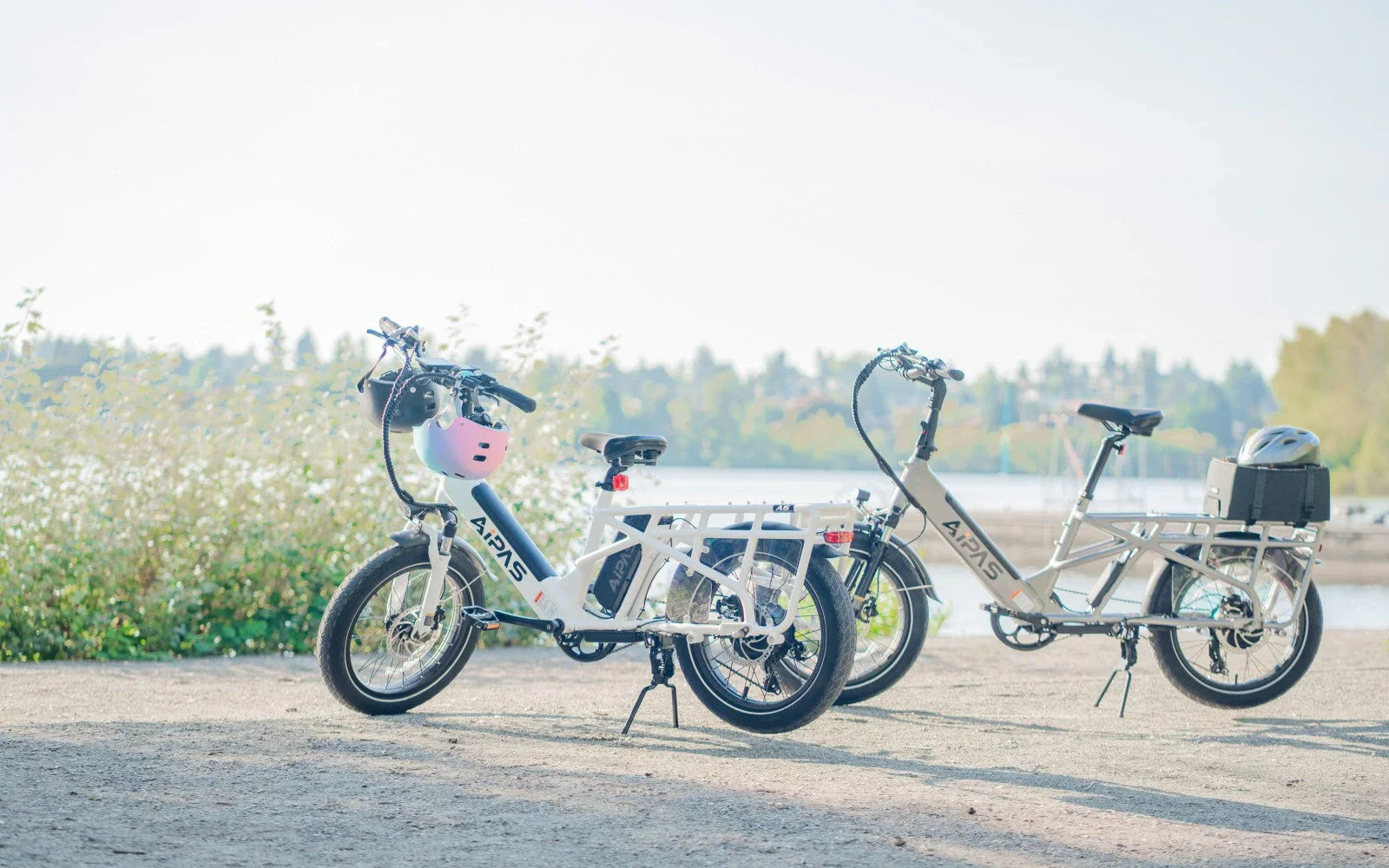Introduction
Electric bikes are a great way to get some exercise, explore the outdoors, or simply get from point A to point B. With a built-in motor, an e-bike helps you ride farther and faster without tiring out too quickly.
But before you hop on and start pedaling, there are a few essential things to check—like making sure the frame fits your body and adjusting the bike for comfort. Most importantly, you need to ensure your electric bike is safe to ride.
Here’s a quick guide to walk you through your pre-ride safety check.
Are Electric Bikes Safe?
Because electric bikes are equipped with motors, they can go faster than traditional bicycles. This may raise safety concerns—but with the right precautions, e-bikes are a very safe mode of transportation.
For starters, make sure you follow your local e-bike laws, such as helmet requirements and rules about where you can ride. These laws are designed to protect you, pedestrians, and other riders on the road.
Keep in mind that regulations can vary by state—and even by city. For example, Florida’s e-bike laws differ from those in New York, and New York City has its own set of rules separate from the rest of the state. Be sure to check the regulations in your area before riding.
In addition to following traffic laws, you can take simple steps before, during, and after your ride to stay safe. Let’s start with the basics.
Pre-Ride Safety Check
Safe e-bike riding starts before you even get on the bike. Follow these pre-ride tips to ride with confidence:
- Check the brakes. Brakes are key to stopping quickly and avoiding obstacles. Before each ride, inspect your brake pads to make sure they’re in good condition. They should be intact, free of cracks, and at least 1.5 mm thick.
- Inspect the tires. First, make sure your tires are suitable for your riding needs—mountain bike tires differ from road bike tires, for example. Then, check for signs of air leaks or tread wear. Don’t forget to check the tire pressure too. The recommended PSI is usually printed on the sidewall of the tire.
- Look at the chain. Bike chains can collect dirt, dust, pollen, and debris over time. If not cleaned, they may become brittle or break. Before your ride, check that the chain is intact and free from damage.
- Test the lights and reflectors. These are essential for visibility, especially at dusk or nighttime. Make sure your bike’s lights and reflectors are properly secured and working correctly so you can see—and be seen—on the road.
- Check your battery level. The last thing you want is to run out of power mid-ride. Make sure your battery is charged before you head out. Charging needs vary by bike model, so refer to your user manual.
Battery Charging & Safety Tips
The motor on your e-bike is powered by the battery, making it one of the most critical components. Here’s how to maintain your battery and use it safely:
- Use the charger that came with your e-bike. E-bike batteries vary in type—such as lead-acid, lithium-ion, or lithium iron phosphate—as well as in voltage, watt-hours, and amp-hours. Using the wrong charger can prevent proper charging or even cause a fire hazard.
- Avoid extreme temperatures and moisture. Proper battery storage can extend its lifespan and reduce the need for premature replacements. Keep your battery away from very hot or very cold environments, and avoid humidity. If you're not using the bike, remove the battery and store it indoors in a cool, dry place—ideally between 50°F and 73°F (10°C to 23°C).
- Look for signs of damage. Regularly check your battery for signs of wear, such as corrosion or dents. Never ride with a damaged battery—it may drain faster than expected or pose a safety risk. If you’re riding 1,000 miles or more per month, we recommend inspecting the battery every 3–4 months.
- Replace when needed. If the battery is damaged or won’t hold a charge, it’s time for a replacement. To maximize battery life, keep the charge level between 30% and 70%. Avoid fully charging and draining the battery repeatedly, as it puts extra stress on the cells and shortens the battery’s lifespan.
What Safety Gear Should You Wear When Riding?
What you wear on your ride can impact your safety. Here’s a quick list of essential gear:
- Helmet. A helmet helps protect against head and facial injuries in the event of a crash.
- Goggles or protective glasses. Eye protection prevents debris from impairing your vision. On sunny days, they also help protect your eyes from UV rays.
- Protective clothing. Dress for the weather so you stay comfortable and focused on the road. Wear fitted clothing—loose or baggy clothes can get caught in the gears.
- Reflective gear. A reflective vest or strips on your helmet make you more visible to others. All Aipas e-bikes come equipped with reflectors on the wheels as required by law.
Explore Aipas’ Top-Rated Electric Bikes for Safety
Riding an electric bike is a fun and safe way to travel—but only if you follow e-bike safety best practices to protect yourself and those around you. The tips above cover everything from pre-ride checks to safety gear and battery care.
The first step to a safer ride? Choosing a well-built, high-quality electric bike.
Aipas M1 and Aipas F3 electric bikes are designed with your safety in mind. Our batteries are UL2271 certified by Underwriters Laboratories, meeting global safety standards. The frames have also passed over 150,000 durability tests.
Best of all, every Aipas bike comes with a leading one-year warranty, so you can ride with peace of mind.





Leave a comment
All comments are moderated before being published.
This site is protected by hCaptcha and the hCaptcha Privacy Policy and Terms of Service apply.